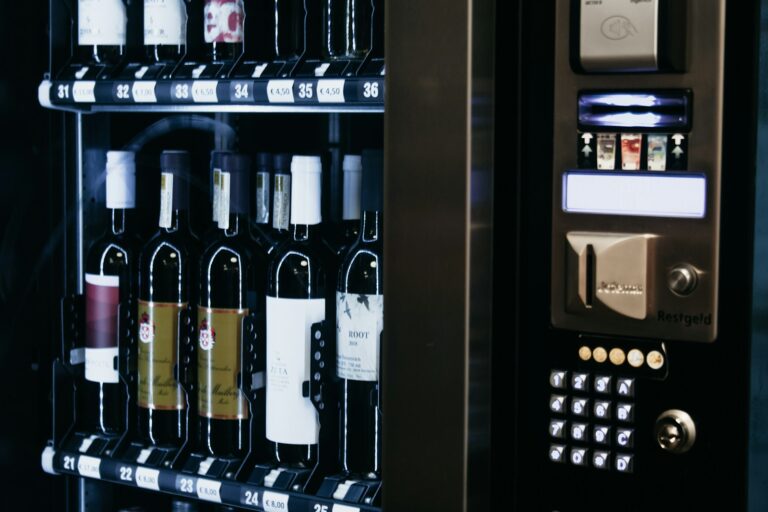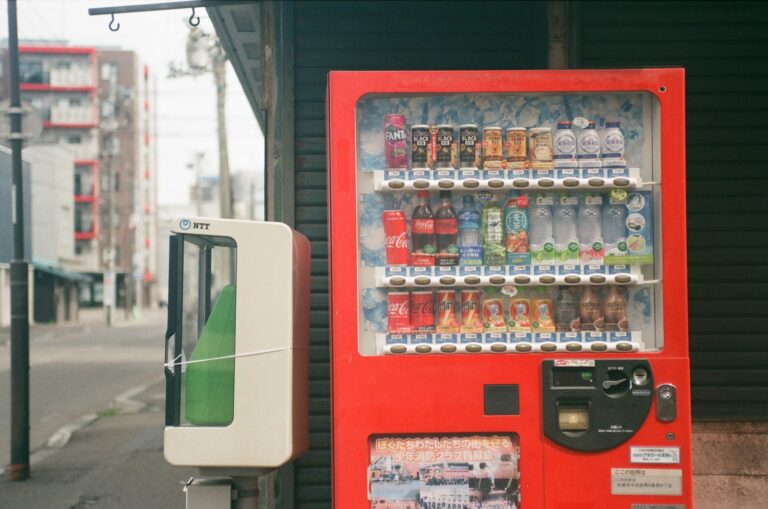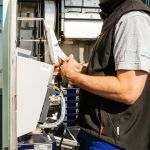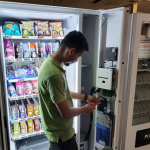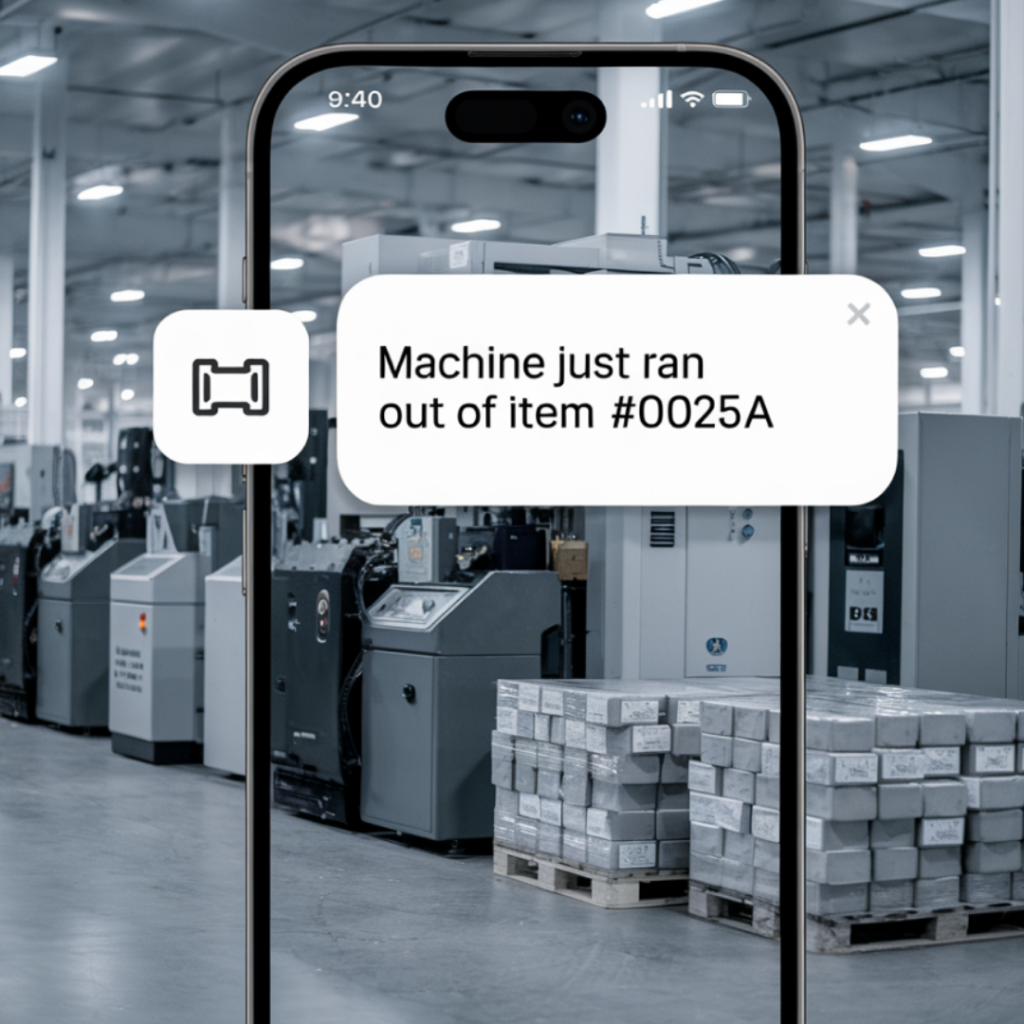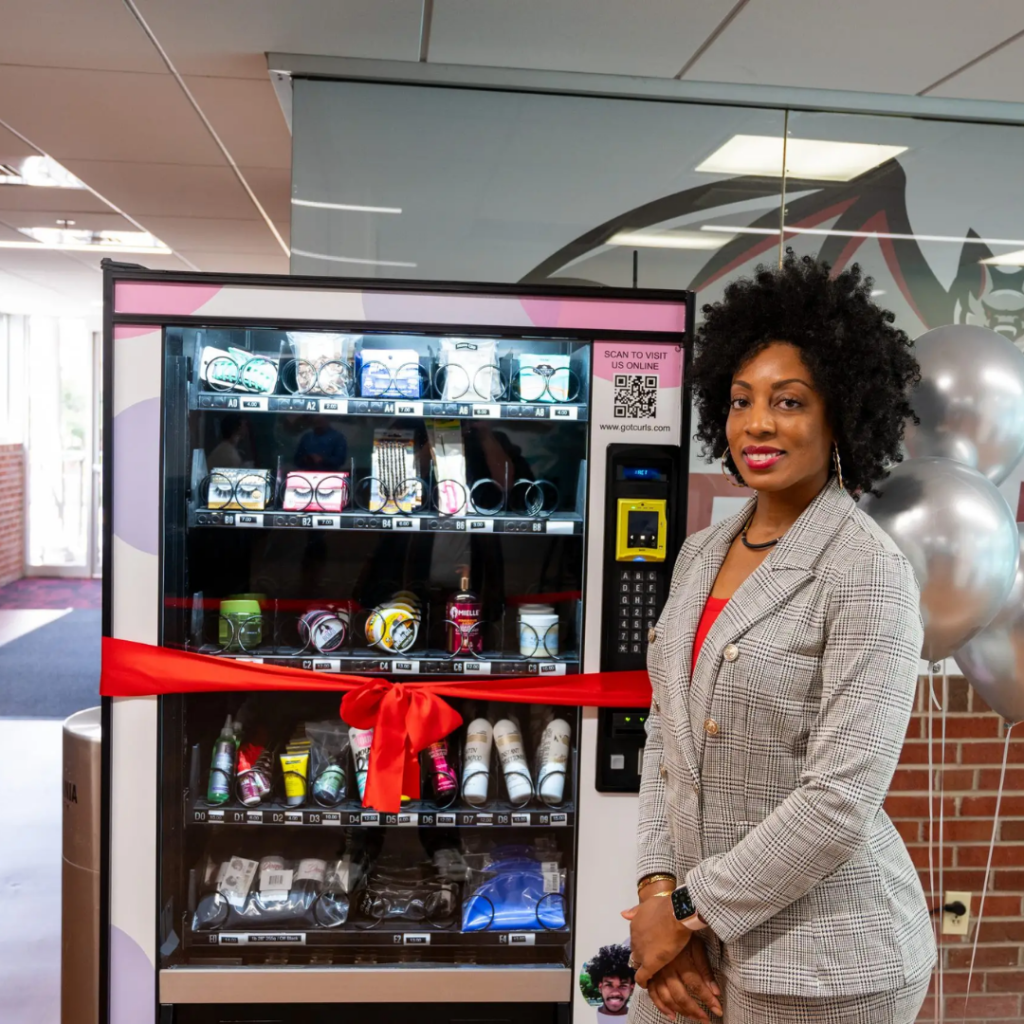Vending Machine Financing Model
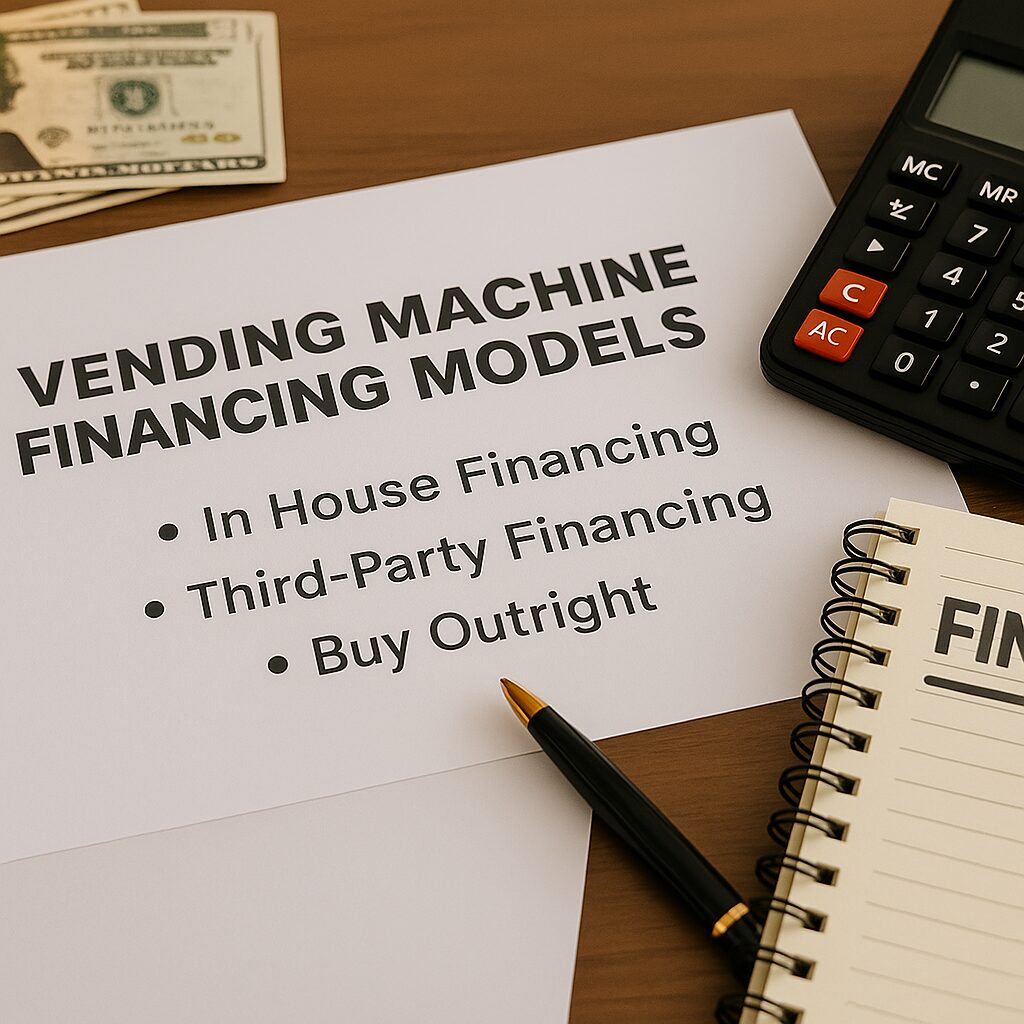
How to Fund Your First Machine Without Breaking the Bank
Why Financing Is a Smart Start
Getting into the vending business isn’t just about finding a great machine—it’s about making smart financial decisions from day one. And for most new operators, that starts with financing.
Paying $4,000 to $6,000 upfront for a commercial-grade vending machine may not be realistic when you’re testing the waters or scaling your route. Financing gives you the ability to get started without draining your savings or tying up capital that could go toward inventory, marketing, or transportation.
Think of financing as a tool, not a crutch. It’s a way to launch smarter. Done right, it allows you to build income before you’ve fully paid for the machine—turning your vending unit into an asset that earns while it’s being paid off.
Understanding the True Cost of a Vending Machine
Before diving into financing options, it’s important to understand what you’re actually paying for. A vending machine’s price tag is only part of the total cost. Here’s what most first-time operators don’t account for:
Machine Price Range
- Combo Machines: $4,000 – $5,500
- Drink Machines: $3,500 – $4,500
- Smart Vending Machines: $5,000 – $6,500
Additional Costs to Factor In
- Credit Card Reader / Telemetry System: $300 – $400
- Delivery & Freight: $250 – $500 depending on region
- Initial Inventory Stock: $300 – $700
- Setup Tools (Dolly, Shelves, Signage): $100 – $200
Total Startup Cost Estimate: $5,000 – $7,500 for one machine (realistic range)
Even with a lean setup, getting a vending machine off the ground takes capital. Financing helps reduce the upfront load, making the path more manageable.
Your Financing Options Explained
There’s no one-size-fits-all model. Each operator has a different financial profile, credit history, and business plan. Below are the four most common vending machine financing options—broken down with pros, cons, and what to expect.
1. Vendor-Partnered Financing (Used by VMFS USA™)
Many top vending machine sellers (like VMFS USA™) partner with trusted third-party lenders to help first-time operators get approved quickly.
How It Works:
- You select your machine
- VMFS USA™ sends you to their financing partner
- You complete a short soft credit check
- If approved, you finalize purchase and choose payment terms
Typical Terms:
- Loan amounts: $3,000–$25,000
- Payments: $150–$300/month (depending on machine and term)
- Duration: 24–60 months
- Soft credit pull (no score impact)
- Approval within 24–48 hours
Pros:
- Streamlined approval process
- No need to search for your own lender
- Soft pull pre-qualification
- Equipment-focused underwriting
Cons:
- Must purchase from that vendor
- Interest rates vary based on credit
This model is the most beginner-friendly and offers a balanced path between affordability and speed. Most VMFS USA™ buyers go this route.
2. Third-Party Equipment Financing
If you already have a lender or prefer to shop rates, you can use external equipment financing companies to fund your purchase.
How It Works:
- Apply directly with the lender
- Once approved, use funds to buy from any vendor
- Some lenders specialize in vending or small business equipment
Popular Providers:
- Triton Capital
- Balboa Capital
- National Funding
Pros:
- May offer lower rates with strong credit
- Can shop multiple vendors
- Potential for higher loan limits
Cons:
- Slower approval process
- May require personal or business credit history
- Limited vending-specific support
This route is ideal for experienced buyers or those with strong financials who want maximum flexibility.
3. Lease-to-Own Programs
Less common in the vending space but still available, lease-to-own options allow you to “rent” a machine with the goal of full ownership after the term.
How It Works:
- Monthly lease payments
- You don’t technically own the machine until the end
- Buyout clause after term (or early termination fee)
Pros:
- Low barrier to entry
- Often no down payment required
- May help avoid large upfront costs
Cons:
- Higher overall cost due to leasing terms
- No equity until final payment
- May include usage restrictions
It’s an option, but usually not the most cost-effective unless you have limited credit and no access to equipment loans.
4. Credit Cards or Business Lines of Credit
Some operators self-finance with a business or personal credit card to keep control and avoid loan agreements.
How It Works:
- Use available credit to fund the full purchase
- Pay off over time based on your card’s interest rate
Pros:
- Immediate funding
- No external approval process
- Control over payoff timeline
Cons:
- High interest rates (especially if unpaid balance remains)
- Can affect personal credit if not managed well
- No built-in support from lender
This is best for operators with cash flow confidence and discipline. If you expect revenue quickly and can pay down fast, it’s a viable short-term bridge.
How VMFS USA™ Supports First-Time Financing
At VMFS USA™, we don’t offer in-house financing—but we make the financing process seamless by partnering with top-rated lenders who understand vending.
We help you:
- Pre-qualify with a soft credit check
- Explore multiple term options based on your business plan
- Choose the right machine based on income goals, not just budget
- Avoid common traps like buying used machines with no support
- Set realistic expectations for cash flow and breakeven
And because VMFS USA™ works exclusively with vending equipment, your approval odds are higher than they’d be at a traditional bank or generic business lender.
What Lenders Look For
Even with beginner-friendly financing, lenders still review basic criteria to determine risk and terms. Here’s what matters most:
Credit Score
- Most approvals start around 600–620 credit score
- Some programs offer options for under 600 with added documentation
- Higher scores = lower interest and better terms
Business Plan or Route Plan
- Even a simple 1-page outline of your goals helps
- Include location type, expected foot traffic, and income potential
- Lenders like to see your thinking, not just your numbers
Down Payment
- Some financing options require $500–$1,000 upfront
- Others allow 100% financing with first payment due in 30 days
Proof of Income or Bank Activity
- New operators may be asked to show basic proof of income
- This is to ensure repayment capability—not to judge profitability
If you’re working with VMFS USA™, our team can help prep these materials or guide you through what to expect.
Understanding Breakeven and Cash Flow
A machine doesn’t pay for itself overnight—but it can become profitable surprisingly fast when paired with the right plan.
Let’s run a realistic breakeven scenario for a combo vending machine financed over 36 months.
Example Monthly Cost Breakdown
| Item | Monthly Cost |
|---|---|
| Machine Loan Payment | $185 |
| Card Reader + Data Plan | $15–$20 |
| Restocking Inventory | $300 (variable) |
| Fuel & Route Time | $50–$100 |
| Maintenance Reserve | $25 |
| Total (Est.) | $570–$630 |
Average Monthly Revenue (1 Location)
- $1,100 gross income
- $300–$350 in product costs
- ~$750 in gross margin
Estimated Net Profit:
- $750 margin – $630 expenses = $120 net monthly profit (early stage)
- Grows as route stabilizes, foot traffic increases, or prices are optimized
This breakeven happens within 2–3 months on most accounts with even modest foot traffic. Once your machine is paid off, that $185/month becomes pure margin.
Common Financing Mistakes (And How to Avoid Them)
Financing helps you launch faster—but only if you avoid these common traps.
Mistake #1: Financing a Used Machine
It may be tempting to buy used and finance it via a personal loan—but used machines often lack warranty, parts support, or cashless readiness. That means more downtime, more service calls, and fewer returns.
Solution: Start with a new, cashless-ready machine that comes with support and known working condition. VMFS USA™ builds machines with 99% uptime in mind.
Mistake #2: Choosing the Wrong Machine
Too often, first-time operators buy a soda-only machine or a snack-only model that limits flexibility. The result? Missed sales.
Solution: A Combo Vending Machine allows both snacks and drinks, maximizing profit per visit. And with smart tech, you can see sales in real time.
Start with a model that matches your goals, not just the cheapest tag.
Mistake #3: Ignoring the Terms
Some financing deals seem great up front but come with balloon payments, high interest, or confusing terms that hurt you later.
Solution: Always review the total cost of the machine over time, not just the monthly payment. VMFS USA™ partners only with lenders who offer clear, flat-rate financing with no surprise clauses.
Why Smart Operators Finance with VMFS USA™
You’re not just buying a vending machine—you’re starting a business. VMFS USA™ makes that easier by supporting operators before, during, and after purchase:
What You Get with VMFS USA™
- Pre-qualification in under 10 minutes
- Soft credit pulls (no score impact)
- Access to smart vending, combo, and drink machines
- U.S.-built models with ADA and safety compliance
- Post-sale strategy calls to help with placement and pricing
- 99% uptime parts-tested machines
Whether you’re buying your first machine or your tenth, financing through VMFS USA™ partners keeps the barrier low and the business running high.
Final Thoughts: Buy What Pays You Back
Don’t let a $5,000 sticker price hold you back from launching a vending business. With the right machine, in the right place, with the right support—you can generate income in your first 30 days while still paying off your machine gradually.
Financing gives you flexibility. VMFS USA™ gives you direction.
Pair the two, and you’re not just buying a machine.
You’re buying a business that works for you.
FAQs
Can I finance a vending machine with bad credit?
Yes, some VMFS USA™ financing partners approve scores as low as 580. A soft credit check is used for pre-qualification.
What’s the average payment when financing?
Most combo machines average $150–$200/month depending on term and credit.
How fast can I get approved?
Pre-approvals happen in as little as 1 business day, with machines ready to ship shortly after.
Is there a down payment?
Some plans require $500–$1,000 down. Others may offer deferred first payments or full financing with terms.
Can I write off my vending machine?
Yes. Vending machines often qualify under Section 179 tax deductions, letting you write off the full value in the year of purchase.

